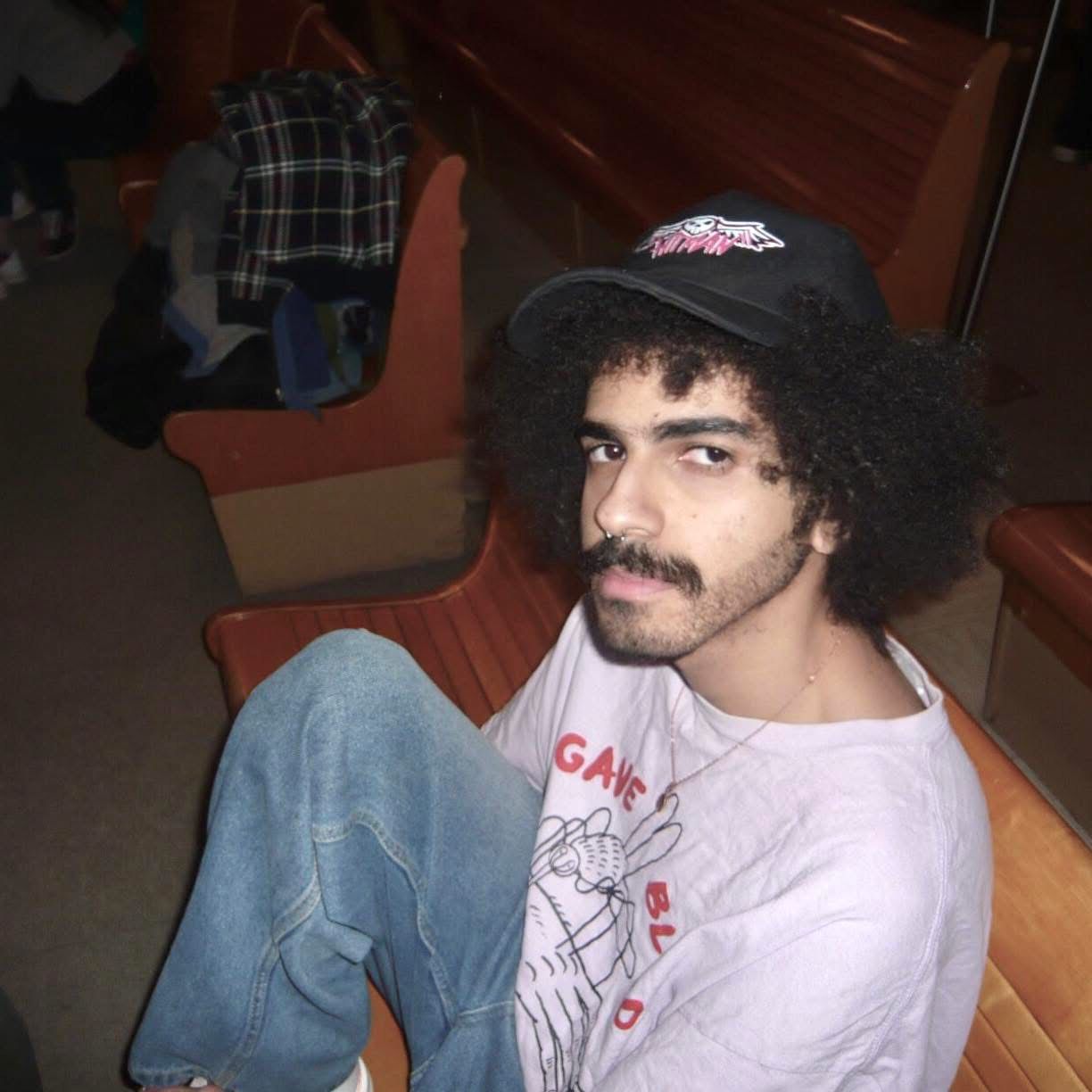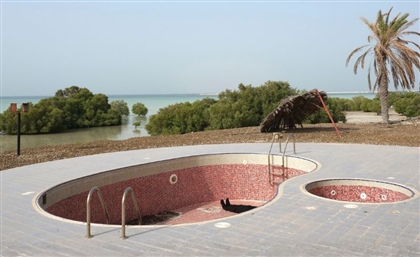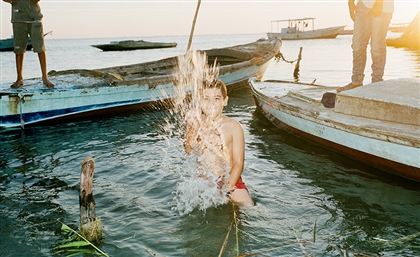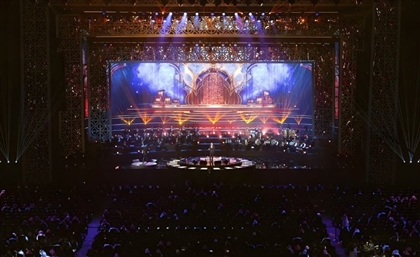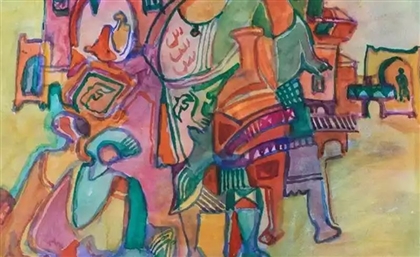Between Two Shores: How The Sea Anchors & Liberates
Ahead of his Alexandria exhibit, we spoke with photographer Roger Anis, whose perspective coloured how we experience the sea.
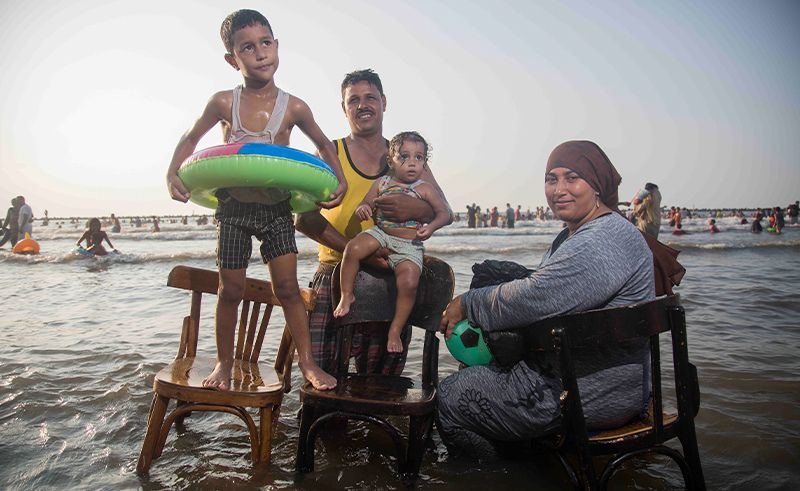
Roger Anis is an Egyptian documentary photographer, photo editor, and curator who’s been telling stories through his lens since 2010. After earning his fine arts degree in 2008, he found his footing as a photojournalist, with his work appearing in The New York Times, TIME, Le Monde, The Guardian, and more. He's also collaborated with organizations like UNICEF and UNDP. His work has also been showcased at places like the Institute Du Monde Arabe in Paris, The Hermitage Museum in Russia, and the MUCEM Museum in Marseille, among others.
Anis’ work often explores the delicate ties between humans and their surroundings, whether in ‘Oh Mysterious Nile’ or the stories of communities in ‘Knights of the South’. His latest project, however, turns its gaze to the sea, a space that is both a literal and metaphorical escape for many. I sat down with him to learn more about his approach to portraits. By that point, I’d only ever seen photos of his work online. The photographs themselves were undeniably striking, yet there was something in the air around them that I couldn’t fully grasp until I spoke to Anis. So, going to see it in person myself felt like the next logical step.
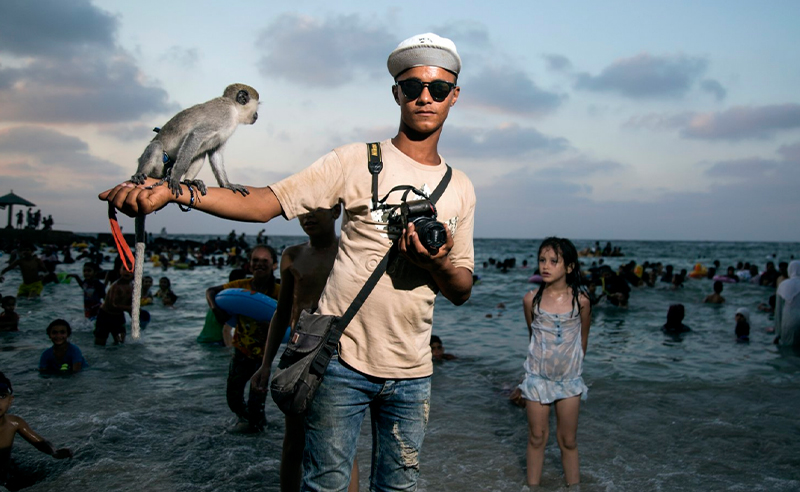
His latest project, ‘Between Two Shores’, began with a conversation in Marseille. There, his friends, two Palestinian filmmakers, spoke of their connection to the sea as a link to home. Having recently moved from Paris, they found that the beaches in Marseille offered something Paris never could; a real, tangible connection to Gaza. It was around this time that Anis met Marine, a journalist whose spirit matched his own, both of them began chasing the same dream: finishing the third part of his sea project in Gaza, following Egypt and Marseille.
While Anis couldn’t visit Gaza in 2024, he brought together his previous works, ‘Shaabi Beaches’ and ‘Marseille Le Metissage’, both of which explore the connection people have with the Mediterranean, a sea which Palestinians from Gaza hold near and dear.
As I delved deeper into Anis’ work following our interview, what I’d expected to be a simple transcription of our conversation soon turned into a reflection on how his work changed the way I saw the sea and experienced his exhibition.
On the morning of the exhibition, a week after I had interviewed Roger Anis, I roped a friend along and hopped on a bus to Alexandria. We made a quick detour to the Qaitbay Citadel where the sound of the sea had been completely drowned out by the crowd.
It was my friend’s first time visiting Alexandria and as an Alexandrian myself, I knew I had one unspoken rule I must always follow: never, under any circumstances, let someone leave this city without properly experiencing the sea. We had only six hours before our bus left back to Cairo, and to fail in this would be nothing short of treason.
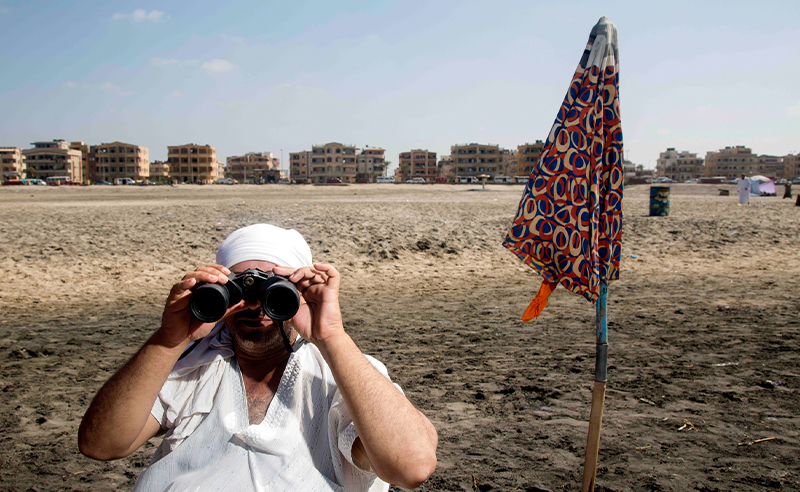
Fortunately, we were able to locate an alley that led to a spot by the water. We slipped past the 'members only' sign, narrowly avoiding a group of elderly men in tuxes and a brigade of vocal Greek swimmers before making our way onto a quiet boardwalk.
I could tell then that the sea, something I’d seen countless times, was known to my friend, just not intimately. The more time we spent with it, the more I found myself experiencing it through her eyes as if it were a stranger to me too. She mentioned there was a song she’d like to play. It was ‘Ana Baashak Al Bahr’ by Nagat Al-Saghira, a song about melancholy in the face of the sea. I had grown up with a version of the same song by Mohamed Mounir, so hearing this rendition made it fresh again in my mind, each soulful syllable interlacing themselves to the sight of the sea before me
Upon arriving at the exhibit, the first thing my eyes gravitated to when I walked through the door was a large print suspended from the ceiling. The photograph showed a man on a beach, wearing a galabeya and aqal. He held a large pair of binoculars up to his eyes. The beach behind him was wide and desolate, lined with rows of unfinished and torn down apartment buildings.
Beyond the image, the space, with its high ceilings and arched doorways, framed a view that divided two distinct worlds. On the left, photographs from a beach in Marseille; on the right, the beaches of Ras El Bar, Gamasa and Baltim. The way the sea flowed between them made it seem as though they were always meant to be experienced together, So I walked, letting each photograph hold me for a moment while the song my friend had shared earlier echoed faintly in the back of my mind. It was as if the song had somehow always belonged here, had been written for this moment, for these walls, for this exhibition alone.
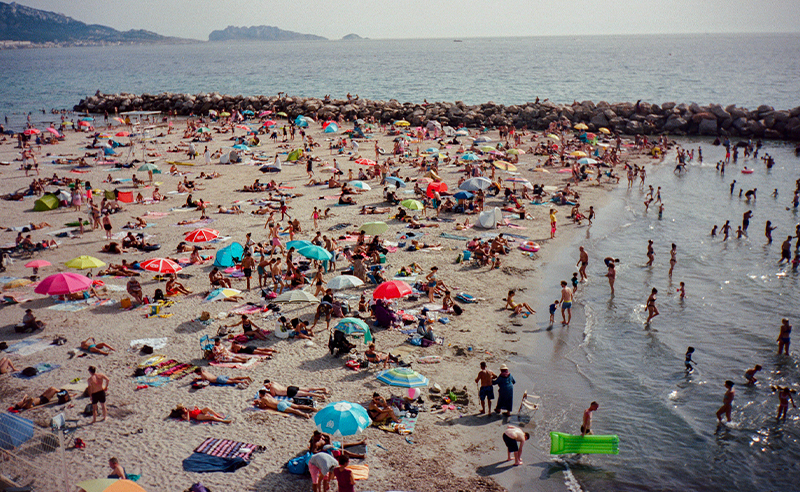
In the midst of it all, Roger Anis sat with photography collective Safena 7, guiding a small group through a discussion of the project. I sat with them, listening as pieces of our conversation from the previous week took shape in the room around me.
In your previous works, like ‘Mysterious Nile’, ‘Will You Be Immortal’ and ‘Knights of the South’, you explore people and communities and how they connect with their surroundings. In this project, the sea is a very central theme. When you photograph people's portraits, the people they admire, what are you hoping to capture about them?
When I take portraits, I strive to seize not just the image, but the essence of the person in the photo, the fleeting thing that resides only in that moment. The photo can only show who a person is when that person feels comfortable in front of the lens. It’s not always easy, especially in Egypt. What I seek most is for the portrait to be real, to reflect the truth of the person, without all the layers life adds over time.
I imagine it can be challenging to capture the realities of things like poverty for example while also respecting the dignity of the individuals you're portraying. How do you personally navigate that balance?
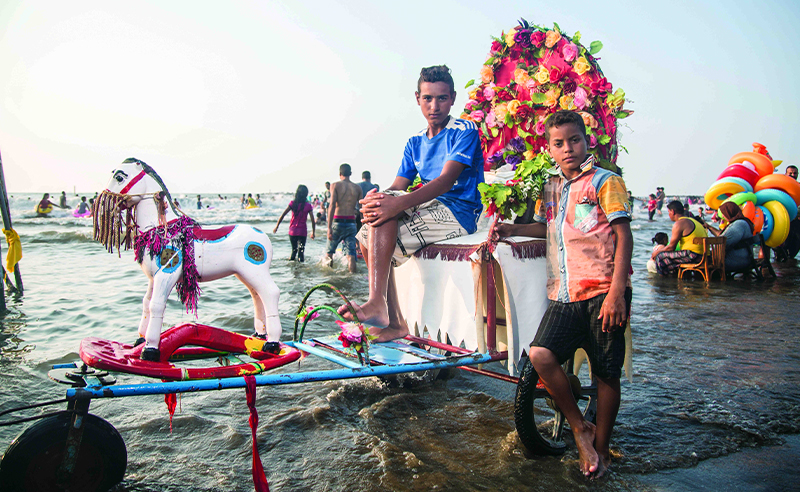
I feel like in this age of social media, the ease with which one can snap a photo on a mobile phone often comes with a certain power. The power to control the subject in the frame. And while it may be common to take pictures in public spaces, I think it's always important to make an effort to ensure that the dignity of those captured is upheld so that the person looking at them can connect with their stories, regardless of the circumstances.
In ‘Shaabi Beaches’, you describe the sea as an escape from financial or social pressures, while in ‘Marseille’, you talk about it as a space of unity for individuals. How does Gaza's sea compare in your mind?
Whenever I speak to people from Gaza, they often say the sea is their only way out. I’m not here to speak for them, not after everything they’ve endured. In places like Egypt or Marseille, or pretty much anywhere the sea can be an escape too, but it’s different there. You have options. Visas, trains, paths to a way out. In Gaza, none of that exists. No trains, no visas. Just two million people stuck in an open air prison, with no way out. The sea is everything.
Did you have any specific plans in place to visit Gaza before October 7th? You’d mentioned wanting to go in 2023.
Yes, I had planned to go in 2023, but I ended up postponing it to 2024. And then, obviously everything changed.
You’ve exhibited your work for institutions like the Heritage Museum and MUCAM. Have these exhibitions shaped your perspective, and the role of photography in general, for social change?
The concept of social change is very complicated because it's a messy, tangled thing. I view it less as a single moment and more as a gradual process. For me, being a documentary photographer means making the unseen visible, or putting it all out there in a way people can actually see and feel. When you do that, you're not just showing photos, you’re also quite literally showing a part of someone’s life. You're giving people a peek into worlds they don’t know of and struggles they may have never even thought about. It’s about connecting dots, making things real in ways that matter. I’d like to think that all of that is very much part of the process.
Were there any surprises when you were observing people in say, Balteem compared to Marseille? Any similarities or cultural differences?
There’s one undeniable similarity and that is because anyone standing before the sea feels an overwhelming sense of freedom. It's as if you leave everything behind and become someone new. totally and completely untethered. It’s crazy because the sea, in all of its vastness, has an undeniable psychological effect on all of us no matter who we are or where we come from. There’s something almost magical about it. But in Marseille, the sea doesn't discriminate. It belongs to no one and to everyone at once. It’s not bound by class, there's no division. In Egypt, it's a different story. The sea is still very much a symbol of escape since it's steeped in layers of class, poverty, and everything that comes with it.
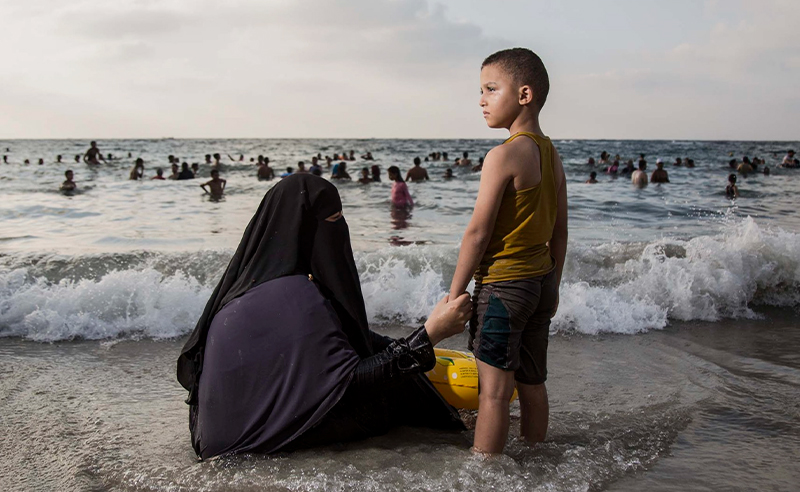
Did you take these photos in 2017 or 2018? Were there any new layers or meanings in the photos after you contextualized them for this exhibition?
Yeah, when I first took these photographs, I had not thought of them as part of an exhibition. They were simply scenes unfolding before me, caught in the light of a particular day. But later, when I returned to them with the idea of the two Mediterraneans in mind, I began to really see how the two shores seemed to almost call out to one another. They were in conversation with each other. And I kept thinking, what does it mean to exist on the same sea but to see entirely different realities? The more I reflected, the more I started connecting these images. The sea, after all, is a shared space, yet people experience it in so many different ways that are shaped by things like class and history. It also made me think about the beach in Marseille and individuality, how we can be surrounded by others in the same place and still exist in your own distinct world. One of the easiest ways to get to know a city or a society is through its beaches.
Yeah It’s interesting when you think of a beach as almost a condensed version of the city itself.
I do feel strongly that a beach will always be an accurate microcosm of the place it's located in. You don’t need to walk through the streets of a city to understand the people—you can see it all on the shore. The way people engage with each other, the way space is divided, who has access to the water and who doesn’t. It reflects the same social structures, the same divisions of class and poverty. Like in Marseille, the beaches are open to everyone. In Egypt, access depends on what you can afford. The beach tells you everything you need to know about the society around it.
You mentioned speaking to friends from Gaza before creating this exhibition. Were there any specific stories that resonated with you during the process?
Nothing in particular comes to mind now but what I will say is that ever since I began this project, Gaza and the sea never once left my mind. I've been gathering images, little fragments of life by the water, trying to understand, to listen but the fact that I couldn’t go is a sadness that stays with me. In the end, I couldn’t really do what this project was initially set out to do.
As a fellow Alexandrian, I have to say that the way you describe the sea as a source of solace for people who have once lived by it really hit home for me, especially since I myself always felt a similar longing for the sea in my years living so far away from it. Was Alexandria chosen for this exhibition because of its connection to the sea, or was the decision more about your personal ties to the city?
It was a bit of both, actually. At first, I hadn’t planned on doing it in Alexandria, but as the project developed, it just felt like the right place. Initially, I had considered Cairo when I first started planning, but over time, Alexandria began to feel like the natural choice.
What struck me most here was the people. They weren’t necessarily your typical gallery-goers or the usual Jesuit crowd. Instead, it was a melting pot. People from the neighborhood passing by, a bit of everyone. There’s a new energy here. The way people respond to the photos feels so genuine, and it makes me feel like we’re creating something special.
Yesterday, I watched as people reacted to the photos, took pictures with them, and had conversations about what they were seeing. It was beautiful because it showed that, in one way or another, we all share a connection to the sea. It stirs something in us. Memories, emotions, moments we’ve had by the water. We all carry a piece of it with us. It’s universal.
- Previous Article The ‘Sleek’ Edit With Kuwait-Based Fashion Agency Owner Farah Assaad
- Next Article Six Unexpected Natural Wonders to Explore in Egypt
Trending This Week
-
Dec 16, 2025







